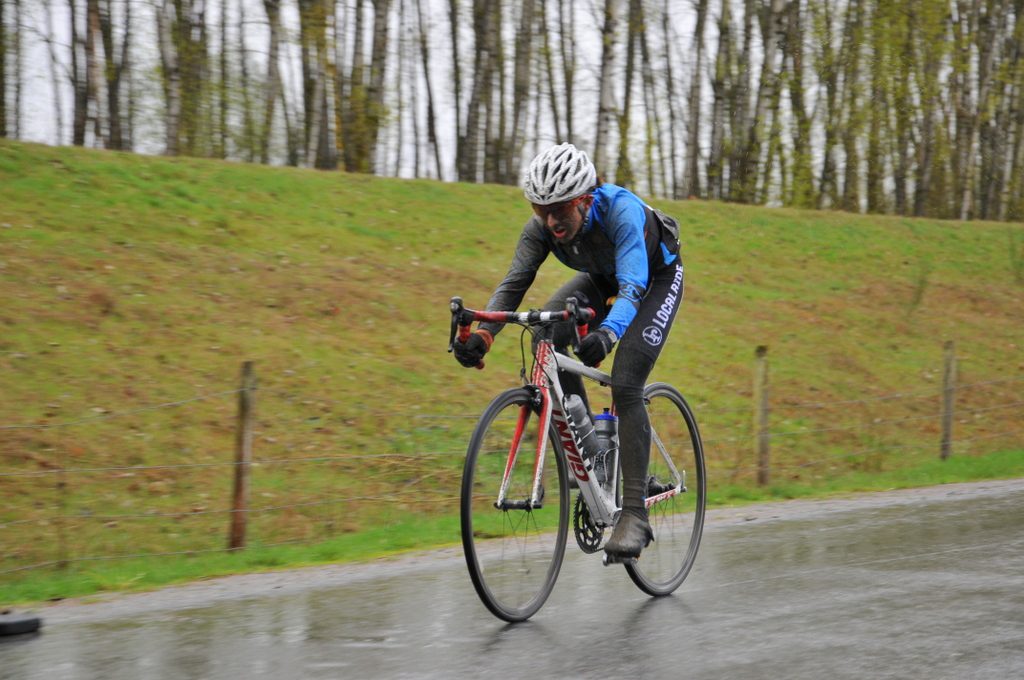CCM talks to Barry Lyster about Jeremy’s Roubaix
Fourteenth edition rolls April 9

On April 9 the 14th running of Jeremy’s Roubaix, which started life as Harris Roubaix, takes place in Pitt Meadows, BC. Renamed in honour renowned B.C. cycling coach Jeremy Storie who passed away suddenly in February 2013, the race utilizes gravel dyke paths instead of cobbles, but is nonetheless a challenging ride.
One of Storie’s athletes was Maggie Coles-Lyster, who notably represented Canada in three different cycling world championships in 2016: cyclocross, Junior track and road.
Jeremy’s Roubaix in, in fact, several races. Each circuit is 10-km, five of which is gravel Pitt Meadows Dyke system roads. Riders race anything from two laps (Under 13/Under 15) to ten (Cat. 1 men).

CCM talked to Barry Lyster, race organizer and Maggie’s father, about this unique event.
Q:What are the main changes to the race over the years?
A: We moved the location back in 2012 from the original Harris Roubaix course. The new location provides a more interesting road section, and less pedestrian traffic on the dykes. This year we have added a separate Master 30+ 1,2,3 start for the first time.
Q: Will you be racing the Masters? Is it still 8-laps?
A: I will not be racing the Masters. This is the first year we are offering a separate Master start. There has been a sharp rise in the numbers of Master riders, and with road nationals coming to Vancouver in 2017, I want to provide them with the best race opportity to prepare. It is still 8 laps. I strongly believe that we should keep our early season races short enough to provide for more competitive, tactical racing as opposed to a race that is too long for this time of year and just becomes a death march.
Q: How many riders do you usually have for Jeremy’s Roubaix? How have the numbers changed in 14-years?
A: Last year was the biggest since taking over the race back in 2010. We have experienced a down-turn in road racing participation over the past few years, but we are now experiencing growth again. I would like to see 200 for this year’s race.
Q: What’s the course like? Is there a section of the dyke gravel that is toughest? Is it better if it rains?
A: The course is flat. The only elevation is entering and exiting the gravel section. The gravel tends to be a little soft at about 2.5-km in on the dyke section. There is a sharp right hand switch-back from the gravel back to the pavement which is about 200 metres from the finish. It makes positioning on the final lap out of the corner critical! We have had massive wind and rain over the years. Riders are covered in mud, spitting gravel and really needing to reach deep to get through the race. For me, this is what racing is all about.

What notable winners/participants has the race had?
For the Jeremy’s Roubiaix years – women, Steph Roorda, Denise Ramsden and Maggie have won the women’s side. The men’s race has been pretty much dominated by the Russ Hayes/Accent Inns team the past few years with Isaac Leblanc winning the past two editions.
Q: The March 11 story mentioned that proceeds from the race go towards Maggie’s “path to developing into a world class cyclist on the road and track”. Is Maggie participating in Jeremy’s Roubaix this year? How much is the race able to support her progress?
A: Unfortunately, this will be the first year Maggie will not be racing Jeremy’s Roubaix. For her, it is a very special race as Jeremy was her coach just before his death. On the positive side, she will be racing a Nations Cup in the Netherlands that weekend with her Belgian based Lares-Woawdeals team. Jeremy strongly believed that we needed to get our riders to Europe as often, and at as young an age as possible. Jeremy’s Roubaix helps out a portion of her progress, as her annual race expenses will top $20,000 not including sponsored product. This is just one of the stumbling blocks why so many of our young Canadian cycling talent have a hard time making it on the world stage.
